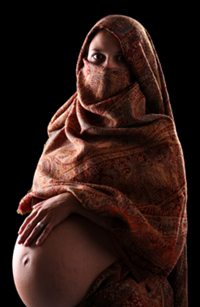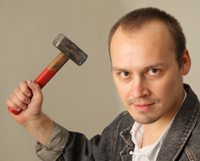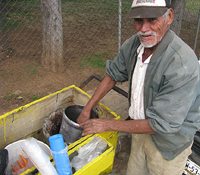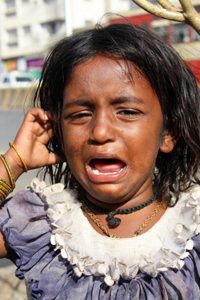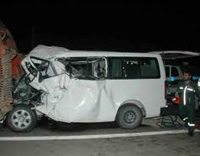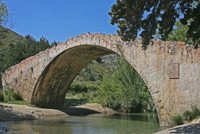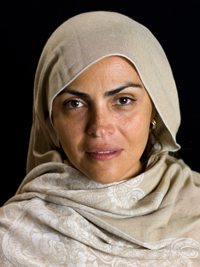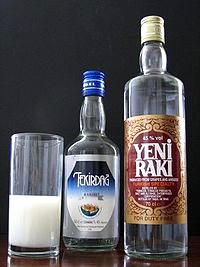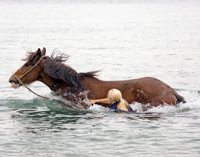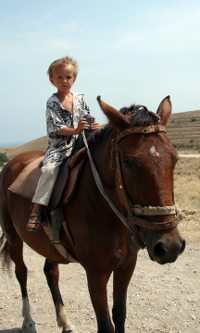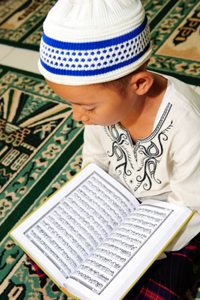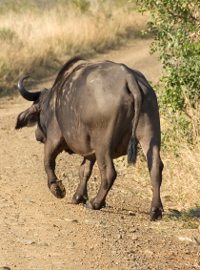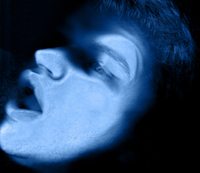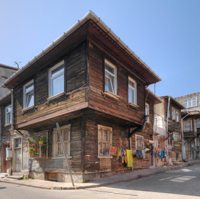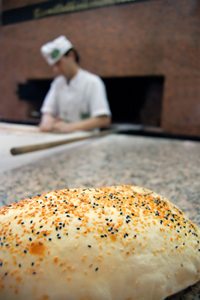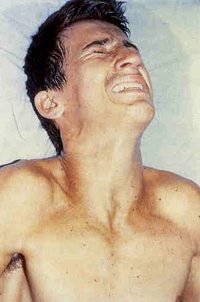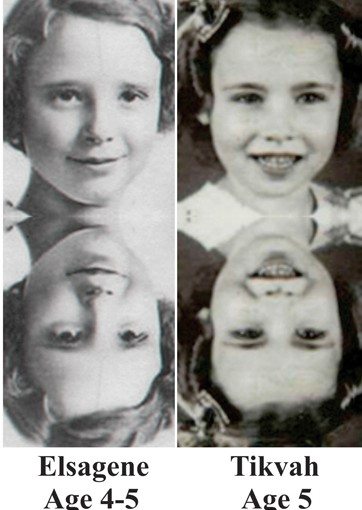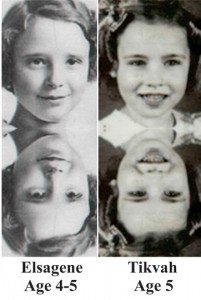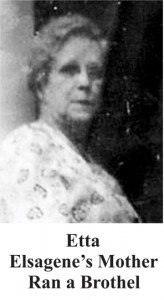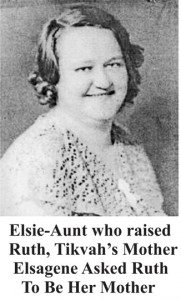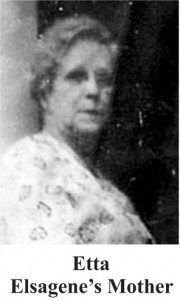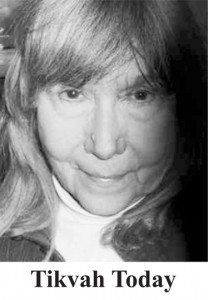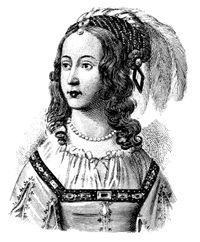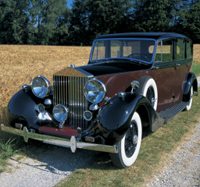How Case Derived: Spontaneous Emergence of Past Life Personality
Researchers: Satwant Pasricha, PhD & Others, Research Summarized by Ian Stevenson, MD
From: Unlearned Language, New Studies in Xenoglossy, by Ian Stevenson, MD
Article by Walter Semkiw, MD from Born Again
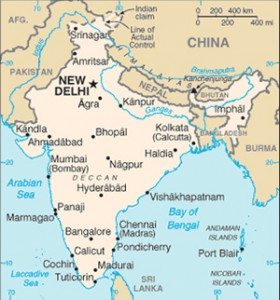
This case involving Uttara Huddar is especially fascinating, as the past life personality, whose name is Sharada, would spontaneously take over Uttara’s body and would remain for varying periods of time. In most reincarnation cases, the contemporary individual views the past incarnation as a distant memory and retains control of consciousness.
In contrast, in this case, Sharada, the past life persona, would completely take over the consciousness of Uttara’s body to the extent that Uttara had no memory of what occurred while Sharada was manifesting. Sharada’s appearances occurred over a period of at least nine years.
As such, the Sharada | Huddar case demonstrates an interesting property of the soul, which is that the soul retains past life personalities within it. This is discussed further in the section entitled Soul Evolution.
This case also shows that nationality and ethic affiliation can change from one lifetime to another. An amusing aspect is that the past life personality, Sharada, showed prejudice and disdain towards the ethnic group that the contemporary personality, Uttara, belonged to. This shows that it does not make sense to establish one’s identity too strongly on national or ethnic ties, as these can change from one incarnation to another.
History of Bengal in Relation to India
 Uttara and her family lived in Nagpur, a city of 1 million, located in west central India. In the map provided above, Nagpur is seen near the center of India. Sharada stated that she lived in Bengal, which is over 1200 kilometers or 750 miles from Nagpur. In the map provided to the right, Bengal would be located in the area highlighted in yellow and in the area where Bangladesh is now situated.
Uttara and her family lived in Nagpur, a city of 1 million, located in west central India. In the map provided above, Nagpur is seen near the center of India. Sharada stated that she lived in Bengal, which is over 1200 kilometers or 750 miles from Nagpur. In the map provided to the right, Bengal would be located in the area highlighted in yellow and in the area where Bangladesh is now situated.
The history of this region of the world is complicated. Bengal is a region located between India and Myanmar, which formerly was called Burma. In 1947, when India gained independence, Bengal was split into two countries along religious lines. The western section became part of India, which came to be called West Bengal. Kolkata, previously known as Calcutta, is the principle city of West Bengal. The eastern part of Bengal eventually became the nation of Bangladesh. West Bengal and Bangladesh still share the common Bengali language.
In India, several different languages are spoken. The major Indian languages are Hindi, Bengali and Marathi. Though the three languages derive from a common ancient root language, in contemporary times, they are as different as are Spanish and Italian. Bengali speakers do not understand Hindi or Marathi, nor do Marathi speakers understand Bengali or Hindi.
Xenoglossy in Reincarnation Case of Sharada | Uttara Huddar
Uttara, the contemporary personality, could only speak Marathi, the language of her parents, while Sharada, the past life personality, could only speak Bengali, a language that Uttara and her family members did not understand. As such, this case represents an extraordinary case of xenoglossy.
Xenoglossy is the ability to speak a language without learning the language by normal means. Sharada never learned Bengali, nor did she understand it in her normal conscious state. Yet when Sharada took over Uttara’s body, she could speak Bengali fluently.
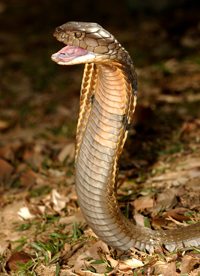 In addition, Sharada provided the names of her family members in Bengal to investigators, which were factually verified through Bengali genealogical records. Uttara, the contemporary personality, had no knowledge of these family members from a past incarnation.
In addition, Sharada provided the names of her family members in Bengal to investigators, which were factually verified through Bengali genealogical records. Uttara, the contemporary personality, had no knowledge of these family members from a past incarnation.
More amazing is that Sharada, the past life personality, was not aware that she was dead. Rather, she acted as if she was still alive, transported though time from the ninetieth century to the present. Sharada did state that she was bitten on a toe of her right foot by a cobra, which was the last incident that she described in her lifetime, but she did not seem to realize that she had died from the snake bite.
Sharada had no understanding of modern inventions, such as kitchen appliances, tape recorders and motor cars, which should have made her realize that she was appearing in a different era. Still, Sharada maintained that she and her Bengali family were still alive and well.
Uttara Huddar and her Family
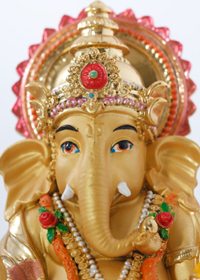 Let us get to know the characters in this interesting story. Uttara, the subject of the case, is the daughter of GM and Manoram Huddar. As mentioned, the family lived in Nagpur, a city of one million people, where the main languages spoken are Hindi and Marathi, though 10,000 Bengalis also live in the area. GM Huddar’s family had lived in the Nagpur area for generations.
Let us get to know the characters in this interesting story. Uttara, the subject of the case, is the daughter of GM and Manoram Huddar. As mentioned, the family lived in Nagpur, a city of one million people, where the main languages spoken are Hindi and Marathi, though 10,000 Bengalis also live in the area. GM Huddar’s family had lived in the Nagpur area for generations.
GM Huddar fought for Indian independence and he graduated from Nagpur University, later becoming a landowner and farmer. Mr. Huddar spoke Marathi. He did not know Bengali. Manorama, his wife, spoke Marathi and Hindi, but she spoke no Bengali. Family members never went to Bengal and they had no Bengali neighbors. The Huddar family worshiped the Hindu deity Ganesh, the being with the elephant head, who is pictured to the right.
Spirit Being Involvement in Reincarnation Cases
When Manorama was pregnant with Uttara, she would often dream that a cobra was about to bite her right big toe. Manorama would kick off the snake and then wake up. It was as if Manorama was experiencing the persona of Sharada, Uttara’s past lifetime, in these dreams. Sharada, it seems, was trying to communicate to Manorama, Uttara’s mother, that Sharada would be born to her.
This is reminiscent of the dream in the Hanan Monsour | Suzanne Ghanem reincarnation case, also researched by Ian Stevenson, MD. In that case, Suzanne Ghanem’s mother told Ian Stevenson about a dream that she had, which occurred shortly before Suzanne was born. In the dream, Ms. Ghanem saw that she would have a baby girl. Then she saw a woman who appeared to be about forty years old, who she later realized looked like Suzanne. This woman in the dream said, “I am going to come to you.” In other words, Suzanne appeared to be announcing herself in the dream, just as Sharada seemed to announcing herself to her future mother though the dream with a cobra biting her right foot.
Ian Stevenson, in fact, called these dreams in which a soul seems to be signaling its upcoming incarnation to future relatives as “announcing dreams.” Stevenson was told of announcing dreams by the relatives of subjects in many reincarnation cases.
The Monsour | Ghanem reincarnation case, by the way, is also important in that it shows that facial features can remain the same from one lifetime to another.
Reflections of a Past Lifetime in a Phobia, as well as in Dreams and Literature
Uttara was born on March 14, 1941. Uttara had a normal childhood, though she did have a phobia of snakes. The snake phobia was severe from ages to six to eight, as judged by her father.
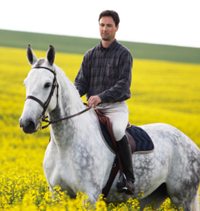 Phobias related to past life trauma are observed in reincarnation cases. For example, in the Rashid Khaddege | Daniel Jurdi case, Daniel had a phobia of fast moving cars. In his past lifetime as Rashid, he died when a speeding convertible car he was in flipped over. The Khaddege | Jurdi case is another reincarnation case which demonstrates that facial features can remain the same from one lifetime to another.
Phobias related to past life trauma are observed in reincarnation cases. For example, in the Rashid Khaddege | Daniel Jurdi case, Daniel had a phobia of fast moving cars. In his past lifetime as Rashid, he died when a speeding convertible car he was in flipped over. The Khaddege | Jurdi case is another reincarnation case which demonstrates that facial features can remain the same from one lifetime to another.
Uttara had a recurrent dream up until the age of eight, in which she saw her husband coming to her riding on a pony. When he arrived, he caressed her pleasantly. These dreams, we shall see, reflect the lifetime of the past life personality, Sharada.
As a child, Uttara had a special interest in Bengal and Bengalis, and she read translations of Bengali literature. This interest appears to have been related to her past lifetime as Sharada, who lived in Bengal. Note that Uttara read Marathi translations of Bengali literature; she did not learn the Bengali language.
Uttara, as a young adult, went to Nagpur University where she received a master’s degree in English and master’s in Public Administration. She was hired as a part-time Lecturer in the Department of Public Administration at Nagpur University. Her education and work history indicate that Uttara is an intelligent and grounded woman.
Sharada, A Past Life Personality, Emerges
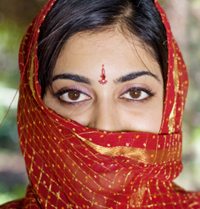 In 1973, when Uttara was 32 years old, she was admitted to a hospital in Nagpur for asthma and a gynecological problem. She was under the care of Dr. J. R. Joshi, who was Bengali. In the hospital, a yogi came to give lectures and instruction on meditation. Uttara began to practice meditation in the hospital.
In 1973, when Uttara was 32 years old, she was admitted to a hospital in Nagpur for asthma and a gynecological problem. She was under the care of Dr. J. R. Joshi, who was Bengali. In the hospital, a yogi came to give lectures and instruction on meditation. Uttara began to practice meditation in the hospital.
Uttara’s behavior then started to change and she began speaking a different language, which was determined to be Bengali. She also began to dress differently, wearing a sari in the Bengali style, placing a portion of the sari over her head, creating a veil. Maratha women, such as Uttara, did not wear saris in this way. Uttara would leave the hospital, stating that she “wanted to go to a place where she thought she belonged.” (1)
Her parents were completely baffled at this turn of events, as they had no connection to Bengal. They puzzled at how their daughter could all of a sudden speak Bengali, a language that neither they, nor she previously, could speak. Further, as their daughter now only spoke Bengali, they could not communicate with her.
Sharada Describes a Past Life in West Bengal
Through Bengali interpreters, Uttara gave details of what appeared to be a past lifetime. She stated that her name was Sharada, not Uttara. She said that her father’s name was Brajnath Chattopadhay and that he was a priest at the Kankalini Temple near Bardhaman, also called Burdwan, in West Bengal. The existence of this little known temple was later verified.
Sharada said that her mother’s name was Renukha Devi. She said her mother died when she was 2 years of age. Her father then was remarried to a woman named Anandamoyi. Sharada said that a maternal aunt named Jagadhatri Mukhopadhaya, who lived in Saptagram, raised Sharada after her mother’s death. As such, Sharada spent most of her childhood in Saptagram, in what is now West Bengal.
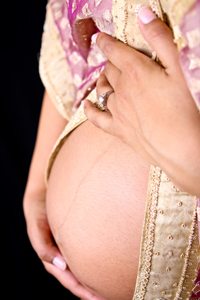 Sharada said that when she was seven years old, she was wed in an arranged marriage to Vishwanath Mukhopadhaya, who was an Ayurvedic physician in the town of Shivapur. Her husband moved from village to village on a pony to see his patients. Later, when Bengali interviewers again asked Sharada what her husband’s name was, as a gesture of respect typical of Bengali women, she would not speak her husband’s name, rather, she wrote it in Bengali. Sharada could write, as well as speak, in Bengali, while Uttara could not.
Sharada said that when she was seven years old, she was wed in an arranged marriage to Vishwanath Mukhopadhaya, who was an Ayurvedic physician in the town of Shivapur. Her husband moved from village to village on a pony to see his patients. Later, when Bengali interviewers again asked Sharada what her husband’s name was, as a gesture of respect typical of Bengali women, she would not speak her husband’s name, rather, she wrote it in Bengali. Sharada could write, as well as speak, in Bengali, while Uttara could not.
Of interest, when Sharada first manifested in the hospital while Uttara was under the care of Dr. Joshi, Sharada acted towards him as a wife would, which made Dr. Joshi uncomfortable. She seemed quite attracted to him. When Uttara found Dr. Joshi dining with a female employee of the hospital, she turned into Sharada and scolded Dr. Joshi in a fit of jealousy.
As Dr. Joshi was a Bengali physician, as was Sharada’s husband, Ian Stevenson wondered if Joshi stimulated Sharada’s appearance. As one point, Sharada stated that Dr. Joshi was her husband. It is possible that Dr. Joshi was Sharada’s husband, Vishwanath Mukhopadhaya, in a prior incarnation. This hypothesis, unfortunately, could not be verified or refuted.
Sharada said that she had two miscarriages and then became pregnant again for the third time. When she was five months pregnant, she journeyed by cart from Shivapur, where she and her husband lived, to Saptagram to visit her maternal aunt who raised her. She left a diamond nose ring and 125 rupees at home, for fear that bandits on the road would steal these valuables.
Less than two months after arriving in Saptagram, Sharada said that she was plucking flowers in the garden when a snake bit her on the right toe. This is the last event that Sharada described in her lifetime.
Multiple Researchers Investigate Xenoglossy Reincarnation Case of Uttara Huddar
At this point, I would like to share that the Sharada | Uttara Huddar reincarnation case was studied exhaustively by multiple experts over a period of years. A newspaper story regarding this case came out in 1975, which drew the attention of Ian Stevenson, MD, who collaborated with professors in India.
As examples, Professor P. Pal, a reincarnation investigator and a native of Bengal, as well as Dr. R. K. Sinha, also a native of Bengal, were deeply involved. Dr. S.K. Das, a professor of Bengali, also testified that Sharada was truly speaking Bengali. Tape recordings of Sharada were made and studied. Ian Stevenson worked with these various researchers and compiled their findings in his book, Unlearned Language.
Verification of Statements Made by Sharada, the Past Life Personality
In May 1975, Dr. Sinha, one of the researchers involved in the case, visited Saptaram in West Bengal and inquired about a family described by Sharada. After much effort, he found Satinath Chattopadhaya, who produced a genealogy of ancestors extending back to the nineteenth century. A beautiful and very ornate example of a geneological record or family tree is provided below.
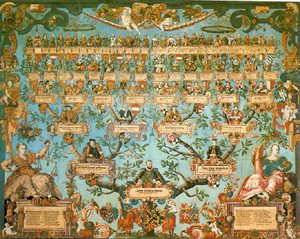 Brajnath Chattopadhaya, the name Sharada stated to be the name of her father, appeared on the genealogy.
Brajnath Chattopadhaya, the name Sharada stated to be the name of her father, appeared on the genealogy.
Dr. Sinha brought the genealogy back to Nagpur and asked Sharada to name her relatives. Sharada made the following identifications accurately:
Father-Brajnath
Mother: Renukha Devi
Stepmother: Anadamori
Brothers-Kailasnath, Srianth and Satinath
Grandfather-Ramanth
Uncle Devdas, corrected as Devanth
Based on Sharada’s ability to accurately name these relatives, as confirmed by the genealogy, Ian Stevenson became convinced that Sharada was referring the Chattopadhaya family as her past life family. If this is correct, then her memories or statements were objectively validated. Unfortunately, names for her husband and father-in-law could not be verified from the genealogy, as they belonged to a different family tree.
Of note, Sharada said that a monk took one of the male family members to become initiated in the Nath order. She said that villages afterwards called the family the Nath family and that family members took on “nath” as a suffix. The genealogy did confirm that nath appears as a suffix for all male family members to this day. Again, Sharada’s statements were objectively verified.
Ian Stevenson makes the point that it was unlikely that the Huddar family could have had read the genealogy in advance of the case investigation, as it was written in Bengali, which the Huddars didn’t understand.
Xenoglossy: Sharada’s Bengali Language Skills
Whereas in some xenoglossy cases, vocabulary can be limited, Sharada could speak Bengali extensively. Professor Pal reported: “I talked with Sharada for about ten hours. Neither of us had any difficulty in understanding even a word of what the other spoke. We were talking with normal fluency.” (2)
Professor Pal also noted, “All the while she was talking fluently in Bengali like a normal Bengali girl and I did not notice any difference in intonation from that of a Bengali lady.” (3)
Dr. Roy signed a document that Sharada and he spoke for two hours exclusively in Bengali. Her answers were sensible and she demonstrated complete command of the Bengali language.
As such, Sharada demonstrated what Ian Stevenson calls responsive xenoglossy, where the subject not only can speak a language that has not been learned, but the subject can also respond to questions in that language in an interactive way. Sharada could also read and write Bengali. In contrast, as noted, Uttara could not understand Bengali at all.
Sharada’s Past Life Knowledge of Bengali Geography and Places
In addition to being able to understand, speak and write Bengali, Sharada demonstrated extensive knowledge of Bengali geography and places, even remote and relatively unknown places.
Recall that Sharada had said that her father was a priest at the Kankalini Temple at Kanchanagar and that it was six kilometers from Burdwan, a city now called Bardhaman, in West Bengal. The existence and location of this temple was verified, which was particularly impressive as the temple is not well-known. In fact, the village of Kanchanagar had been deserted, possibly after an epidemic, and had been overgrown by jungle for 50 years.
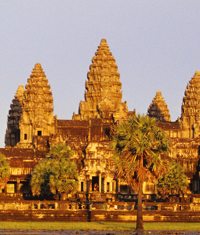 In another example, when an investigator showed Sharada a photo of the Bengali Hanserhwar Temple of Bamberia, Sharada identified it immediately by name. When asked how many towers the temple had, Sharada correctly stated that there were 13 towers, even though the photo only featured a portion of the temple, showing only seven towers.
In another example, when an investigator showed Sharada a photo of the Bengali Hanserhwar Temple of Bamberia, Sharada identified it immediately by name. When asked how many towers the temple had, Sharada correctly stated that there were 13 towers, even though the photo only featured a portion of the temple, showing only seven towers.
She knew that Kali was the goddess of the temple, that the Kali idol had four arms, that the idol was made of neem wood that was painted blue, and that the Rajah of Banberia brought the idol from Benares. All these statements were correct.
Sharada also accurately described the geography encountered and travel time by boat from Shivapur to Shikarpur. She also correctly described geographical details encountered in a trip from Calcutta to Shivapur.
Uttara and the Huddar family had no knowledge of the Kankalini or Hanserhwar Temples, or of geographical details regarding travel in Bengal. Further, the information was obscure and it wound not have been found in the Bengali literature that Uttara read in her youth.
Sharada’s Past Life Knowledge of Bengali Foods
 Sharada had a remarkable knowledge of food specialties of Bengal, which she preferred over the food of Nagpur, India. While Uttara didn’t like sweets, Sharada loved Bengali sweets. When asked what her favorite sweet is, she said sitabhog, which is made only in Burdwan, Bengal. She was able to identify sitabhog when it was brought to her. Further, Sharada could distinguish sweets imported from Bengal from imitations made in Nagpur.
Sharada had a remarkable knowledge of food specialties of Bengal, which she preferred over the food of Nagpur, India. While Uttara didn’t like sweets, Sharada loved Bengali sweets. When asked what her favorite sweet is, she said sitabhog, which is made only in Burdwan, Bengal. She was able to identify sitabhog when it was brought to her. Further, Sharada could distinguish sweets imported from Bengal from imitations made in Nagpur.
When Sharada fasted, she asked for coconut water. Coconuts in Bengal have water, whereas coconuts in the region where the Uddars lived do not.
Sharada preferred to eat rice and she put yogurt in her rice, which is a Bengali custom. In contrast, Sharada and her family preferred bread made from wheat, which Marathi people typically eat. Sharada reported to investigators a long list of foods that were only eaten in Bengal.
Sharada’s Ignorance of Technology
Sharada had no understanding of trains, cars, electricity, electric lights, electric fans or phones. Ian Stevenson wrote that glass bottles baffled her. In nineteenth century Bengal, food and water were kept in earthenware or metal vessels. When asked if she would like to cook Bengalis meals, she said, “How can I cook? There is neither an oven or firewood here?” Cooking on the Huddar’s gas stove was incomprehensible to her. (4)
When she heard a tape recorder play back songs she sang, she thought there was an evil spirit in the tape recorder
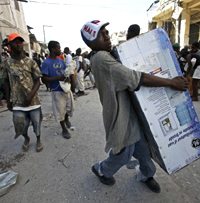 Sharada’s Past Life Bengali Behavior and Disdain of Marathi People
Sharada’s Past Life Bengali Behavior and Disdain of Marathi People
Sharada behaved very much like a Bengali woman, in contrast to Uttara’s Marathi ways. Further, in an amusing and ironic twist, Sharada demonstrated a prejudiced and judgmental attitude towards Marathi people.
Sharada called Marathi people “dasyus,” which means “looters” in Bengali (5). She was demonstrating a typical Bengali attitude towards Marathi people, who Bengalis thought of as inferior. Sharada refused to learn the Marathi language, which she considered a harsh language.
Since she would not learn the Marathi language, Sharada could not communicate with the Huddar family. She spent much of her time alone, reading Bengali books and epics in the Bengali language, which Uttara didn’t understand.
It is amusing and ironic that Sharada was being judgmental and prejudiced towards the Marathis, who would be her own ethnic group in her future incarnation as Uttara. As noted, this case demonstrates that it is not wise to establish identity on one’s nationality or ethnic group, as these can change from one lifetime to another.
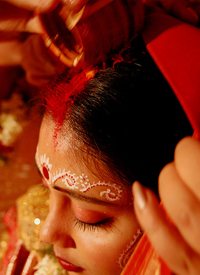 Sharada’s Past Life Bengali Behavior
Sharada’s Past Life Bengali Behavior
Sharada’s customs and behavior reflected her Bengali culture. As noted, Sharada wore a portion of her sari over her head, creating a veil, which is a custom of Bengali women. Uttara did not wear a sari in this way. Sharada went barefoot when she left the house, as Bengali women in the 19th century did, while Uttara wore sandals or shoes when she went out. Sharada would leave her hair loose, while Uttara pulled her hair into a bun. Sharada sat on the floor, while Uttara sat on chairs. Sharada bathed in cold water, as she would have done in the 19th century, whereas Uttara bathed in warm water.
Sharada applied vermillion or cinnabar to the part of her hair, a custom of married Bengali women. When she asked members of Uttara’s family to help her apply the cinnabar, Sharada became upset when they would apply the cinnabar from the top of her head to the forehead, which in Bengali culture means that she may suffer early widowhood. The proper Bengali way is to apply the cinnabar the opposite way, from forehead to top of head. Sharada also asked that alta, a red liquid dye, be applied to borders of her feet, another Bengali custom.
Sharada would greet older persons by touching her head to the ground, a Bengali tradition. Whereas Uttara was social and friendly, Sharada did not like to appear before strangers, unless they were Bengali. Sharada would not let Uttara’s father or brother touch her, as she did not feel related to them.
Reincarnation & Changes in Religious Worship
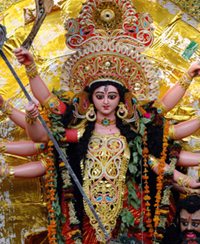 Uttara and her family, the Huddars, worshiped Ganesh, the Hindu deity with the elephant head. Sharada, on the other hand, worshiped the Bengali deity Durga, represented by a woman with ten arms. An image of Durga is provided to the right.
Uttara and her family, the Huddars, worshiped Ganesh, the Hindu deity with the elephant head. Sharada, on the other hand, worshiped the Bengali deity Durga, represented by a woman with ten arms. An image of Durga is provided to the right.
Sharada followed the Bengali custom of drawing an image of Durga on the floor with powder. Overall, Sharada was much more religious than Uttara, which may have reflected Sharada’s family life, as her father was a temple priest.
Transformation of Uttara into Past Life Personality Sharada
As noted, Sharada first appeared when she was in the hospital under the care of Dr. Joshi in 1973, when Uttara was 32 years old. Sharada’s appearances continued at least through October of 1982, a period of nine years.
Sharada would remain for varying amounts of time. Most of her appearances lasted 1-3 days, though some appearances lasted a week or more. The longest appearances lasted for 41 and 43 days. The frequency of appearances could vary, though for a period of time, Sharada appeared approximately twice a month.
 When Uttara returned, she would change the Bengali clothing that Sharada preferred to the clothes that Maratha women wear. Sharada only spoke Bengali, while Uttara never spoke Bengali.
When Uttara returned, she would change the Bengali clothing that Sharada preferred to the clothes that Maratha women wear. Sharada only spoke Bengali, while Uttara never spoke Bengali.
Uttara described to investigators what the appearance of Sharada was like. Uttara said that when Sharada was approaching, she felt pain and tenderness on the top of her head. She could also have the sensation of ants crawling on top her head.
Her tongue would feel like it was being pulled inwardly and that her eyes were being pulled inside her head. She could have the sensation as if she was shrinking. She would begin weeping and then she would lose consciousness.
Sometimes the transition to Sharada would occur during sleep. Uttara would be in her normal state of being when she went to bed, then in the morning would awake as Sharada.
Whenever Sharada emerged, she would ask for flowers and sometimes she would go out to the Huddar’s garden to pick flowers. With this behavior, it appears that Sharada was reenacting the events that led to her death, just before she was bit by the cobra.
Source of Reincarnation Phobia: Sharada Relives Being Bitten by a Cobra in her Past Life
 There were episodes where Sharada even seemed to be reliving symptoms of a venomous snake bite. Her toe would become black, as would her tongue and the inside of her mouth. She would close her eyes and point to her toe and say, “A king cobra has bitten me.” (6) As such, it appears that Sharada was at times reliving her death in the nineteenth century.
There were episodes where Sharada even seemed to be reliving symptoms of a venomous snake bite. Her toe would become black, as would her tongue and the inside of her mouth. She would close her eyes and point to her toe and say, “A king cobra has bitten me.” (6) As such, it appears that Sharada was at times reliving her death in the nineteenth century.
Preservation of Past Life Personality within the Soul: Sharada Thinks She is Still Alive and Denies Knowing Uttara
Despite Sharada’s repetition of her death scene, in which she would go out to the garden to pick flowers, she had no awareness that she was dead. Though she would say that she was bitten by a cobra, was put on a stretcher and then lost consciousness, she never would state that she had died.
When she was asked if she was a spirit, Sharada replied, “I am not a spirit, I am a woman” (7)
At times when Sharada appeared, she could not speak. She would point to her throat and tears would roll down her checks. It appears that in these episodes, Sharada did not fully integrate into Uttara’s body, which made her unable to vocalize. During severe phases, she could not take care of herself and the Huddar family had to care for her, even give her water. Normally, Sharada could feed, clean and clothe herself.
On the other hand, Sharada, at times, could act quite autonomously and on three occasions she left the Uddar’s home on her own. Once she left to find Dr. Joshi, who Sharada considered her husband.
 When asked how she had arrived at the Huddar’s home, she would give different explanations, as if she herself didn’t know. Once she said that her husband left her with the Huddars while he went to holy places along the Ganges River.
When asked how she had arrived at the Huddar’s home, she would give different explanations, as if she herself didn’t know. Once she said that her husband left her with the Huddars while he went to holy places along the Ganges River.
Sharada would ask the Huddars to take her to her husband in Shivapur or to the aunt who raised her in Saptagram. Once she wrote a letter to her husband stating: “I do not like it here. I have been here for a long time. When will you take me home?” (8)
Sharada consistently denied knowing Uttara. When asked where Uttara was, Sharada stated that she didn’t know.
Past Life Personality Sharada Shows Psychic Abilities
Sharada, in contrast to Uttara, demonstrated psychic abilities. Once she told a first time visitor to the Huddar’s home that his wife was dead, his son did not help him and that he had to beg for help from others. All these statements were correct. When a servant girl that worked for the Huddars was sent away for suspicion of stealing, Sharada said that the girl was at that very moment confessing to her grandfather and was weeping in remorse. This was later verified as true. It was as if Sharada was still connected to the soul of Sharada | Uttara, which allowed her to see in extra sensory ways.
Transformation from Past Life Personality Sharada into Uttara
Uttara said that when she emerged from the Sharada phase, she had the sensation that “something is falling down in my body.” (9) Recovery could last from 15 minutes to four hours. Uttara could have difficulty speaking Marathi after a long Sharada phase.
Uttara would have no memory of what occurred during her Sharada phase and conversely, Sharada had no awareness of anything that occurred when Uttara was herself.
For example, when Uttara’s mother, Monoram Huddar, died on July 3, 1981, Uttara was in her normal state of consciousness. When on August 8, 1981, Sharada manifested, she had no knowledge that Monoram had died. When told that Monoram had died, Sharada started to cry.
Reincarnation versus Possession
Due to the dramatic nature of Sharada’s appearances, in which Uttara had no knowledge of what occurred while Sharada inhabited her body, one must wonder if this may be a case of possession, where a disembodied spirit takes over the body of person.
In a separate section of this website, I review my working relationship with Kevin Ryerson, who is a professional medium. Kevin channels several different spirit beings, allowing these spirit beings to communicate with human beings. When Kevin channels, he has no awareness of what goes on during the channeling. When Kevin emerges from a channeling session, he has no memory of what happened during the session.
One may even think of Kevin’s ability to channel as the ability to allow temporary possession of his body in a controlled way. Kevin allows a spirit being to use his body for a period of time, though Kevin retains control and can emerge from the channeling state at will.
As such, there are similarities in the way Sharada would manifest to the channeling phenomenon that occurs with Kevin Ryerson. One difference is that Kevin retains control over the channeling experience and can return to normal consciousness if he desires. In contrast, Uttara had no control over Sharada’s appearances.
Ian Stevenson, MD, felt that the Sharada | Uttara Huddar case is more consistent with a reincarnation case, rather than possession, for several reasons. These include:
Manorama’s announcing dream: When Manorama was pregnant with Uttara, she had a recurrent dream in which a cobra was about to bite her right big toe. Manorama would kick off the snake and then wake up. It was as if Manorama was experiencing the persona of Sharada, Uttara’s past lifetime, in these dreams.
Sharada, it appears, was trying to communicate to Manorama, Uttara’s mother, that Sharada would be born to her. Announcing dreams like this are observed in reincarnation cases, not in cases of possession. An announcing dream was recounted in the reincarnation case of Hanan Monsour | Suzanne Ghanem.
Uttara’s Past Life Phobia of Snakes: Uttara had a phobia of snakes, which was particularly severe from four to eight years of age. This phobia appears to reflect a past lifetime as Sharada, who described being bit by a king cobra. Phobias related to past life trauma are observed in reincarnation cases, as observed in the Rashid Khaddege | Daniel Jurdi reincarnation case.
If this extremely compelling case is accepted as a reincarnation case, it demonstrates the following features:
Responsive Xenoglossy and Personality Retained in the Soul: Sharada could have extensive conversations in Bengali. Professor Pal noted that in total, he conversed with Sharada in Bengali for ten hours. In contrast, Uttara, the contemporary personality, as well as her family, could not speak Bengali at all.
The Sharada personality appears to have been entirely retained within the soul. Sharada did not seem to even know that she had died. Further, Sharada denied even knowing who the contemporary personality, Uttara, was.
Phobia from a Past Lifetime: Uttara, as a child, had an intense phobia of snakes, which appears to reflect her death in a past lifetime as Sharada, by a cobra bite.
Change of Nationality, Ethnic Affiliation & Religious Belief: Sharada, the Bengali past life personality, showed contempt for the Indian Marathi people, which Uttara and her family belonged to. Sharada even referred to the Marathi as “looters.” Though both Hindu, Sharada worshiped the god Durga, while Uttara and her family were devoted to Ganesh.
Spirit Being Involvement & Announcing Dreams in Reincarnation Cases: When Manorama was pregnant with Uttara, she would dream that she was about to be bitten in her right big toe by a snake. It was as if Manorama was experiencing the persona of Sharada, Uttara’s past lifetime, in these dreams. It seems that Sharada, from the spirit world,was trying to communicate with Manorama, indicating that she would be born to her.
Footnotes
1. Stevenson, Ian: Unlearned Language, New Studies in Xenoglossy, University Press of Virginia, Charlottesville, p 74
2. Stevenson, Ian: Unlearned Language, New Studies in Xenoglossy, University Press of Virginia, Charlottesville, p 121
3. Stevenson, Ian: Unlearned Language, New Studies in Xenoglossy, University Press of Virginia, Charlottesville, p 121
4. Stevenson, Ian: Unlearned Language, New Studies in Xenoglossy, University Press of Virginia, Charlottesville, p 114
5. Stevenson, Ian: Unlearned Language, New Studies in Xenoglossy, University Press of Virginia, Charlottesville, p 115
6. Stevenson, Ian: Unlearned Language, New Studies in Xenoglossy, University Press of Virginia, Charlottesville, p 112
7. Stevenson, Ian: Unlearned Language, New Studies in Xenoglossy, University Press of Virginia, Charlottesville, p 113
8. Stevenson, Ian: Unlearned Language, New Studies in Xenoglossy, University Press of Virginia, Charlottesville, p 114
9. Stevenson, Ian: Unlearned Language, New Studies in Xenoglossy, University Press of Virginia, Charlottesville, p 109
 Angelina Lopes was born in Loures, Portugal on July 20, 1953. Her mother was Irma Lopes, who as a devout Roman Catholic. Angelina had a normal childhood, though on one occasion, she stated that she wished that she was a boy.
Angelina Lopes was born in Loures, Portugal on July 20, 1953. Her mother was Irma Lopes, who as a devout Roman Catholic. Angelina had a normal childhood, though on one occasion, she stated that she wished that she was a boy.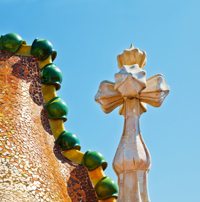 After Angelina’s death in 1960, Erma was extremely distraught and she wondered why God would allow such as tragedy to occur. Six months after Angelina’s death, a friend recommended that Erma see a Rosicrucian sage with psychic abilities, who was named Francisco Marques Rodrigues.
After Angelina’s death in 1960, Erma was extremely distraught and she wondered why God would allow such as tragedy to occur. Six months after Angelina’s death, a friend recommended that Erma see a Rosicrucian sage with psychic abilities, who was named Francisco Marques Rodrigues.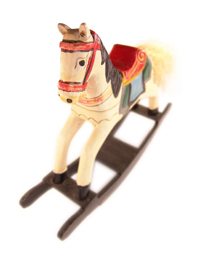 “Have you kept the wooden horse?” (2) When Angelina was alive, she and Hernani would play with Hermani’s toy wooden horse.
“Have you kept the wooden horse?” (2) When Angelina was alive, she and Hernani would play with Hermani’s toy wooden horse. Alfonso’s Past Life Memories of how to Mend Stockings
Alfonso’s Past Life Memories of how to Mend Stockings 7. When Alfonso was about seven years old, he repeatedly asked his mother to take him to the stone bridge on the gypsies’ river. Irma did not know what he was talking about. There was no bridge where they lived in Lisbon and she could not remember any bridge with gypsies.
7. When Alfonso was about seven years old, he repeatedly asked his mother to take him to the stone bridge on the gypsies’ river. Irma did not know what he was talking about. There was no bridge where they lived in Lisbon and she could not remember any bridge with gypsies. In 1997, when Alfonso was 35 years old, he told Ian Stevenson that his memories of the wooden toy horse, the river with the rock bridge with woman washing clothes in the river, and the death of the white dog with white spots were so vivid that it seemed that these memories were from his own childhood, rather than from a past lifetime.
In 1997, when Alfonso was 35 years old, he told Ian Stevenson that his memories of the wooden toy horse, the river with the rock bridge with woman washing clothes in the river, and the death of the white dog with white spots were so vivid that it seemed that these memories were from his own childhood, rather than from a past lifetime.
